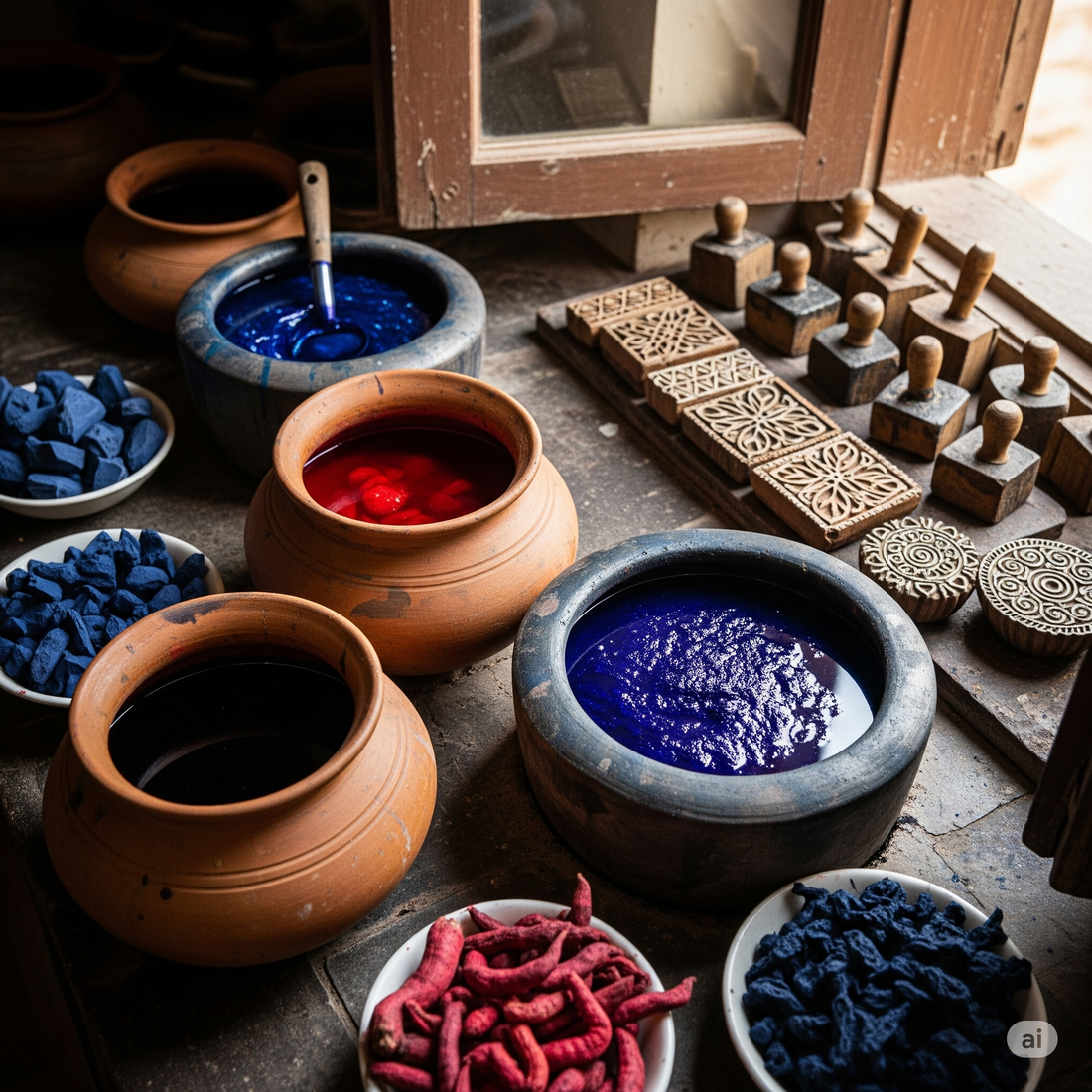
A Legacy Woven in Bagru Ink: The Story of Datta Butti
Share
Datta Butti – A Timeless Thread of Heritage, Hardship, and Handcraft
Long before fashion shows, online stores, and hashtags—there was Bagru. A small town near Jaipur, soaked in the earthy scent of mud-resist printing, echoing with the rhythmic thump of wooden blocks dipped in natural dyes.
And that’s where our story began—even before India gained independence.
From Royal Courts to Modern Closets: The Datta Butti Journey
Our roots run deep into the soil of Bagru, where my grandfather began his journey as a humble artisan. Back in those days, there were no shortcuts. Just bare hands, wooden blocks, and dreams stronger than the summer heat.
With nothing but bundles of hand-printed cloth and pure determination, my grandfather would travel for days—through bullock carts and early trains—to Jaipur. The journey was harsh, dusty, and often dangerous. But it was worth it. Because he wasn’t just selling fabric—he was presenting art to kings and royals, showcasing Bagru’s intricate craft in the royal courts of Jaipur.
He wasn’t just an artisan. He was a cultural ambassador—carrying Bagru’s soul across borders when the country itself had none.
A Legacy of Grit and Grace
In those times, artisans had to fight for every ounce of respect. People preferred foreign textiles. Hand-block printing was considered slow, outdated, and unprofitable. But my grandfather kept going. So did my father, who took this torch and continued it through the toughest years—times when machines overtook man, and handmade lost its place.
There were days we didn’t have money to buy dyes or even afford transport. Still, every yard of fabric was printed with care—sun-dried, washed in flowing water, and pressed by hand.
We’ve faced storms, rejection, and poverty—but never gave up on the art.
And Now, Datta Butti Today
Today, as I, Ravi, lead Datta Butti, I carry not just fabric, but the struggle, sweat, and strength of three generations. We are not just another brand. We are a living archive of pre-independence Indian craft.
We still print every piece by hand in Bagru.
We still use natural dyes, hand-carved blocks, and traditional recipes passed down from my grandfather.
And we still believe—true beauty is slow, soulful, and handmade.
Why Our Prices Are Honest, and Our Work Is Priceless
Since everything is done in-house—from dyeing to printing to stitching—we eliminate all unnecessary costs. That’s why you get the highest quality suits, sarees, and fabrics at prices that are fair and transparent.
No middlemen. No factory waste. No shortcuts. Just timeless Bagru art, straight from our workshop to your wardrobe.
Today, as I, Ravi, lead Datta Butti into a digital and global world, I carry the weight of that heritage with pride and purpose.
Preserving the Art Through Challenges
It hasn’t been easy.
There were years when orders dried up, synthetic prints flooded the market, and traditional work was called “old-fashioned.” Many artisans gave up. But we didn’t.
We stood firm—printing by hand, dyeing with nature, and trusting that people would one day return to what is real and soulful.
That day is here.
Why Datta Butti is Different
At Datta Butti, every fabric, suit, or saree you see is a labor of love—hand-blocked by skilled artisans using organic dyes and age-old techniques. We do not mass-produce. We create. We preserve.
And because we do everything ourselves—from sourcing cotton to printing to packaging—you get authentic, premium-quality Bagru prints at prices that are honest and fair. No middlemen. No brand markups. Just timeless art, directly from our hands to yours.
Join Our Journey
When you buy from Datta Butti, you're not just buying fabric. You're supporting a craft that survived against all odds. You're becoming part of a story that started with a grandfather under a neem tree, holding his first carved block in hand.
We invite you to wear this legacy, feel the texture of tradition, and carry forward a culture that’s rich, rooted, and proudly Indian.
